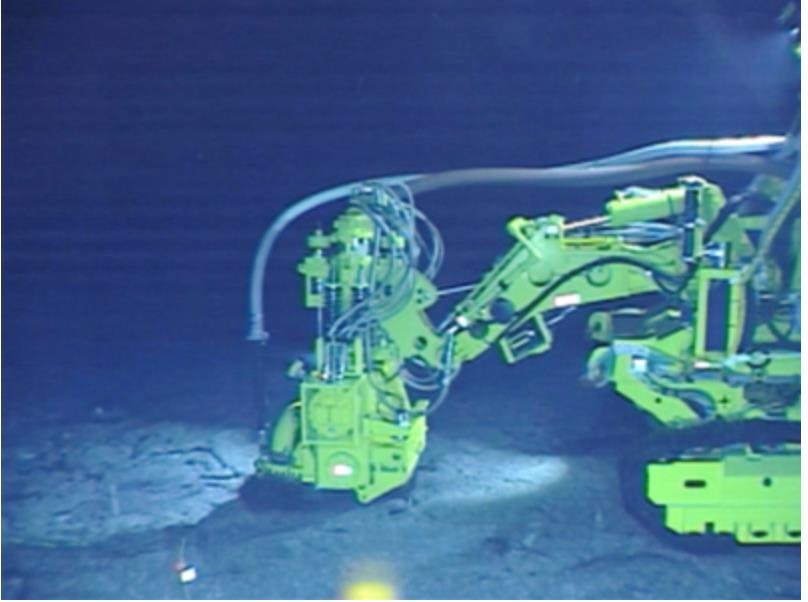(MENAFN- Asia Times) TOKYO – Japan's effort to mine the seabed is moving from the research and development stage toward resource extraction as technological advance is spurred by the demands of national economic security.
If all goes according to plan, Japan's current dependence on China for its rare earth metal supplies could be greatly reduced or eliminated by the end of the decade. China currently dominates global production, processing about 85% of the world's rare earths.
Japan's new National Security Strategy document, released in December, states that“with regard to supply chain resilience, Japan will curb excessive dependence on specific countries.”
Furthermore, it will“secure stable supply for critical goods including rare earth, and promote capital reinforcement of private enterprises with critical goods and technologies, and strengthen the function of policy-based finance, in pursuit of protecting and nurturing critical goods.”
The English version is stamped“Provisional Translation,” but the statement is consistent with the original Japanese.
rare earth metals are a group of 17 heavy metal elements, some of which are of critical importance to the manufacture of electric vehicle motors (dysprosium), wind power generators (neodymium) and other electronic devices. They are used in magnets, batteries, lasers and many other industrial products and processes.
Japan currently imports about 60% of its rare earth metals from China, but they are available in large quantities on the sea floor – if they can be accessed.
Last August and September, Japanese marine engineers working under the auspices of the Cabinet Office's Cross-ministerial Strategic Innovation Promotion Program succeeded in pumping up seabed material from a depth of nearly 2,500 meters in the waters near Minami-Torishima.

Ocean area claimed by Japan. Map: International Institute for Law of the Sea Studies
Now the pumping system must be extended to a depth of 6,000 meters, where large deposits of mud containing rare earths have been found. Pumping from this depth is scheduled to start in 2024.
The task will be made more difficult by strong ocean currents and typhoons. The government has allocated 6 billion yen (US$45 million) to finance the project.
Minami-Torishima is a coral reef located almost 1,900 kilometers southeast of Tokyo and almost 3,350 kilometers east of Taiwan. It is Japan's easternmost and most remote territory with its own separate Exclusive Economic Zone (see map).
In late December, the government also decided that only organizations licensed by the Ministry of Trade, Economy and Industry (METI) will be permitted to mine rare earth metals on Japanese territory. Legislation to put this decision into effect will most likely be submitted to the Diet this year and will almost definitely pass.
In addition, the Japan Organization for Metals and Energy Security (JOGMEC) will be allowed to invest up to 75% in rare earth mining projects. JOGMEC's official English name, which used to be Japan Oil, Gas and Metals National Corporation, was changed last November.
Established in 2004, JOGMEC combines the functions of the former Japan National Oil Corporation and Metal Mining Agency of Japan and acts to ensure stable supplies of oil, gas, coal and metals for Japanese industry.
To this end, it is active in geologic surveying, exploration, development, production, stockpiling, recycling and environmental protection. It also provides private Japanese companies involved in these fields with technical support, equity capital and debt guarantees.
Under its new name, JOGMEC now also promotes carbon neutrality, capture and storage, stable supplies of hydrogen and ammonia, methane hydrate research and development, geothermal energy and offshore wind power.
In August 2020, JOGMEC announced that it had for the first time succeeded in excavating seabed crust [often referred to as mud] containing cobalt and nickel around the Takuyo No 5 seamount near Minami-Torishima.

The JOGMEC test excavator on the seabed. Photo: JOGMEC
The expedition, which employed the Japanese research vessel Hakurei and specially-designed excavation equipment, was commissioned by Japan's Ministry of Economy, Trade and Industry (METI).
Mineral processing (ore crushing and component separation), refining and smelting tests were also conducted and the environmental impact of excavation was assessed.
At the time, JOGMEC identified the following seabed mineral resources:
Hydrothermal deposits Characteristics: ore deposits formed by the precipitation of metal components contained in hot water discharged from the seafloor Location: Okinawa, Izu peninsula/Ogasawara islands Metals: copper, lead, zinc, gold and silver Depth: 700 to 2,000 meters
Cobalt rich crust Characteristics: manganese oxide with a thickness of about several millimeters to more than ten centimeters that covers the rocks from the summit to the slope of the seamount Location: Minami-Torishima Metals: cobalt, nickel, copper, platinum, manganese and others Depth: 800 to 2,400 meters
Manganese nodules Characteristics: elliptical manganese oxide nodules 2 to 15 centimeters in diameter distributed on the seafloor Location: Pacific Ocean Metals: copper, nickel, cobalt, manganese and others Depth: 4,000 to 6,000 meters
JOGMEC noted:“According to prior research, it is expected that the area tested around the Takuyo No 5 Seamount contains enough cobalt to meet Japan's demand for 88 years and enough nickel to meet Japan's demand for 12 years.”
Two years earlier, in 2018, Associate Professor Yutaro Takaya of Waseda University and his colleagues reported that they had found enough rare earth metal deposits near Minami-Torishima to supply Japan for hundreds of years.
According to Takaya,“Our findings may change the nation's policies and strategies on natural resource management, for we could possibly become self-reliant in terms of rare-earth mineral resources and build a sustainable future.”
But first the deposits must be excavated, pumped to the surface and transported to metal processing plants.
Follow this writer on Twitter: @ScottFo83517667